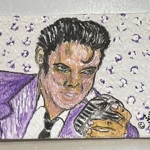FREE: Human Conscience-Graphite on Watery Paper 15x19,5 cm

A member of Listia gave this away for free!
Do you want FREE stuff like this?
Listia is 100% Free to use
Over 100,000 items are FREE on Listia
Declutter your home & save money

"Listia is like EBay, except everything is free" - Los Angeles Times

"An Awesome Way To Give And Get Free Stuff" - Michael Arrington, TechCrunch
This Stuff is Free Too:

FREE

FREE

FREE

FREE

FREE
The listing, Human Conscience-Graphite on Watery Paper 15x19,5 cm has ended.
human conscienceDescartes posed the methodical doubt as a way of knowledge. He stressed the faculty of man to grasp his own thought. He also questioned about the physical existence of consciousness. For Locke, this is the set of information received through the senses. Leibniz, mathematician and philosopher, pursued an "alphabet of human thoughts" similar to a mathematical order. Kant coincided with Locke in that knowledge comes to us from the outside, through the senses, but the order of that knowledge is determined by internal mechanisms of consciousness. For Kant, ethics is synthesized in the idea that one should act as if the rule that is used for oneself could become a universal norm.
We call consciousness an active process (not a "thing" or a "place" in the mind or brain) that can be assimilated to the subjective experience of self-knowledge and reality. Such experience includes sensations, perceptions, memories and thoughts, so that this process involves attention, memory and thought.
We usually distinguish several degrees or levels of consciousness, ranging from the waking state (when we are awake) to the oneiric consciousness (when we sleep). We can also define some of these states, as alterations of consciousness (as occurs when we dream), or as altered states of consciousness
Consciousness is defined as "the reproduction by the individual of the ideal image of his activity aimed at a purpose and the ideal representation in it of the positions of other people. The conscious activity of man is mediated by the collective; during its realization the man takes into account the positions of the other members of the collective. " The conscience of the individual is the subjective, ideal form in which his real social relations, his real existence, are presented.

